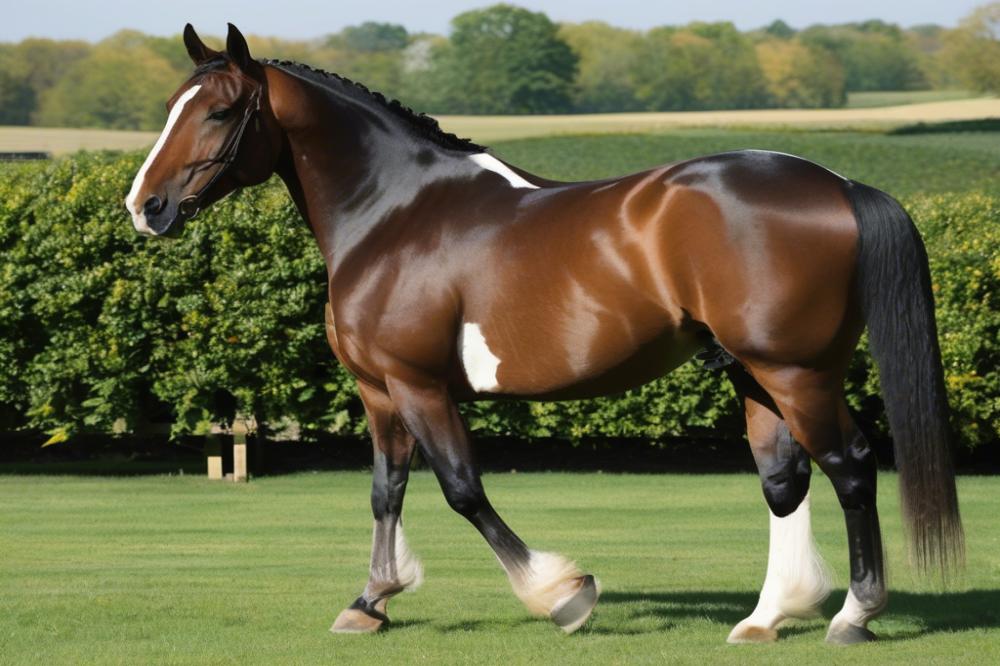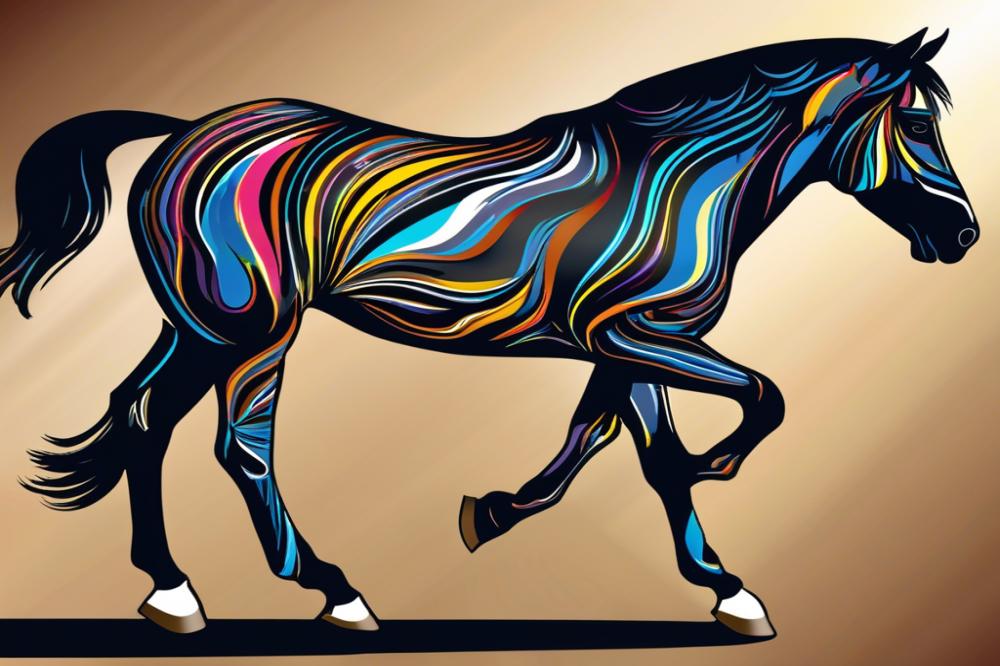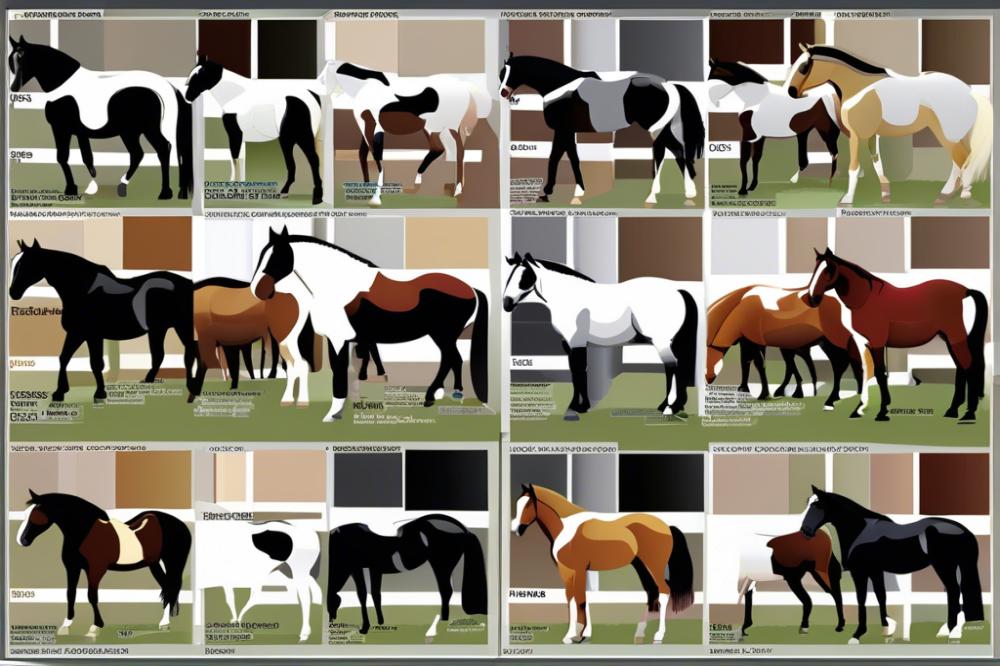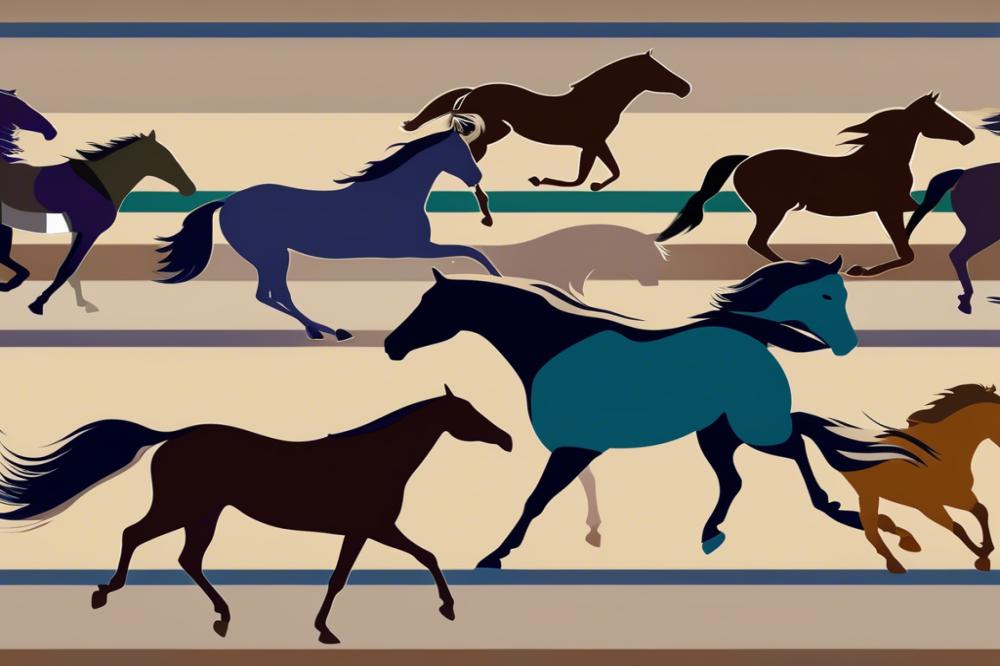Overview of Thoroughbred Horses
Thoroughbreds are one of the most recognized and beloved horse breeds in the world. Known for their speed and agility, these remarkable animals have an impressive background. Originally bred for racing, they trace their roots back to the 17th and 18th centuries. Their lineage is a blend of some of the most noble equine ancestors. Just picture a regal steed galloping across the track, the wind whipping through its mane, showcasing the vigor and grace that has defined this breed for centuries.
Importance of Colors and Markings in Thoroughbreds

When it comes to conservation of horse breed information, the colors and markings of a Thoroughbred play a key role. Each horse boasts its own set of equine characteristics that make it stand out. Observing a Thoroughbred’s coat can be like reading a story written just for you. These markings often carry historical significance, linking to the past in fascinating ways. For example, certain colors might be preferred in the racing world, while others might appeal to breeders aiming for exceptional show horses. The way a horse looks can influence its value and popularity across different horse care circles.
Purpose of the Article

This article aims to dive deeper into the wonderful world of Thoroughbred colors and markings. By exploring this topic, we hope to inform both newcomers and lifelong fans about the fascinating variety within this breed. With a breeds of horses list, one can see how Thoroughbreds hold a special place among them. Think of this journey as an adventure, where each paragraph is another twist in the plot—like a medieval horse names saga, filled with knights, horses, and heroic quests. So, saddle up and let’s trot through the details!
Understanding Thoroughbred Colors

Let’s dive into the world of horse colors! A horse’s color refers to the shade of its coat and any patterns or markings it might have. Some folks might be surprised at just how varied these can be! Each color can tell us something interesting about the horse’s lineage, strengths, and even temperament.
Definition of Horse Colors
When people talk about horse coat colors, they usually refer to what we see on the exterior. These colors can range widely and include shades like bay, chestnut, black, and gray—just to name a few. Markings such as blazes or socks add even more visual variety to these animals. Not only do horse breeds have distinct colors, but each individual can have its own particular hue and pattern.
Genetics Behind Thoroughbred Colors
Genetics plays a crucial role in determining the color of a Thoroughbred. Like humans, horses inherit traits from their parents. This means that the colors can be predictable based on the lineage. Specialized genes dictate not just the shade but also the presence of any unique markings. If you’ve ever noticed how some foals come out looking completely different from their parents, that’s the magic of DNA at work!
Common Color Categories
Let’s break down some of the most common colors found in Thoroughbreds. Bay is popular and is characterized by a reddish-brown coat with darker points on the legs, mane, and tail. Then there’s chestnut, which shines brightly in shades of reddish-brown with no black points. Black horses are striking, often solid in color with a glossy finish. Gray horses can start out dark but lighten as they age, sometimes becoming almost white!
Interestingly, there are other colors too, like palomino or roan. Palominos have a golden coat resembling a buttery color, while roans sport a mix of colored and white hairs. Each color category contributes to the overall beauty of these horses and their appeal in various equine activities. Horse care can vary, as some colors might show dirt more easily than others, making grooming all the more important.
Thoroughbred markings also play a role in their appeal. A small star on the forehead or a blaze down their nose can give a horse its own personality. These unique combinations can even help identify them on the racetrack. When it comes to Thoroughbred breed information, colors and markings are often a fun discussion topic among enthusiasts. Finding the right horse that matches your visual preferences can enhance your joy in owning or working with these magnificent creatures.
Detailed Descriptions of Common Colors
Bay: Characteristics and Variations
Bay horses are a common sight, admired for their rich, reddish-brown coats. This color can range from a light, almost golden hue to a deep, dark mahogany. The mane and tail of a bay are usually black, which creates a striking contrast. Some bays hold special variations, like the “blood bay,” which has a brighter and redder shade. You might even spot a “brown bay,” which is dark, almost black. These colors aren’t just pretty; they come with unique equine characteristics that can influence a horse’s energy and temperament.
Chestnut: Shades and Differences
When you hear the term “chestnut,” picture a sun-kissed horse with a warm, reddish coat. Chestnuts don’t sport black manes or tails; they’re often the same color as their body. Their shades can range from a bright, almost coppery hue to a darker liver color. What’s interesting is how these shades can change with seasons or as the horse ages. Young chestnuts might look different than their older counterparts—sometimes lighter, even speckled. Horse care can play a role too; a healthy diet can enhance the natural color.
Black: True Black vs. Faded Black
Black horses can be striking, with their shiny coats glimmering in the sunlight. True black horses have solid, deep coloring—like an ink spill. However, faded black horses can show signs of brown or even chocolate hues in the sunlight. This variation is often due to the sun’s rays, which can lighten the coat over time. It’s like how your favorite black t-shirt can fade after too many washes! If you admire Thoroughbred markings, you might spot a black horse with just a dash of white on its face; it adds delightful charm.
Gray: The Graying Process and Its Variations
Gray horses start with rich pigmentation, often looking like black or bay in their younger years. As they grow older, they begin to gray out. This process is gradual and can be fascinating to watch. Some gray horses turn a stunning white with age, while others can maintain a steel-gray or dappled look. Dapples are those light spots that appear on their coats, giving them a beautiful, speckled appearance. With horse breeds like Thoroughbreds, you may notice that the graying pattern varies widely, making each gray horse a bit of a mystery.
Common Markings in Thoroughbreds
Definition and Importance of Markings
Markings on Thoroughbreds serve as identification features. They can help distinguish one horse from another especially in large stables. Think of markings as nature’s way of giving each horse a name tag. Horse breeds often share coat colors, but markings add personality. They tell a story about the horse, which can be fascinating for both owners and fans.
Types of Markings: Blazes, Socks, and Patches
When it comes to markings, there are several types you’ll hear about. A blaze is a wide stripe that goes down the horse’s face. It can create a striking look, almost like a superhero’s mask. Then we have socks, which are white markings on the legs. Depending on the breed and individual horse, socks can be tall or short. Patches can be a bit more random, appearing anywhere on the body in various shapes. Each mark contributes to the horse’s individuality, making Thoroughbred markings even more interesting. The playful debate over whether a marking makes a horse look faster can spark laughter among enthusiasts!
Genetic Factors Influencing Markings
Genetics play a fascinating role in determining equine characteristics. Just like humans inherit traits, horses do too, including their markings. Some families of horses pass on certain markings, giving young horses a visual legacy. Colors and patterns can also be influenced by specific genes. These genetic factors can create a diverse range of appearances among different Thoroughbreds. Interestingly, researchers study these traits to understand more about horse breed information and lineage. So, when you see those unique markings, remember there’s a genetic story behind them.
Impact of Colors and Markings on Thoroughbred Breeding
How Colors Affect Breeding Decisions
Breeders often consider coat colors and markings when choosing which horses to mate. Some colors might stand out more in the show ring or on the racetrack. While skill and speed are crucial, a flashier appearance can open doors. When selecting a stallion, a breeder might look for a horse with an appealing coat color. This can add value to the foals, especially if they inherit that bright shade.
Colors can also play a role in a Thoroughbred’s appeal. Buyers often have preferences based on looks. Though it may seem shallow, a horse’s appearance often influences potential sales. A shiny chestnut or a striking gray can attract attention. Some colors are more popular, especially in different markets.
Market Preferences for Certain Colors and Markings
People have distinct preferences when it comes to horse coat colors. In the racing world, buyers may lean towards specific shades, which can affect prices. Interestingly, certain colors, like bay and black, tend to be more popular. Some racers swear by a lucky color, believing it brings success on the track.
Markings can also make a big difference. A horse with a prominent blaze or white socks might catch a buyer’s eye faster than one without. Those unique patterns can be conversation starters at races, drawing in fans and potential buyers. In fact, Thoroughbred markings can help set a horse apart in a crowded marketplace.
Historical Significance of Colors in Thoroughbred Racing
Throughout history, colors and markings have held meanings that go beyond mere aesthetics. In ancient times, certain colors were associated with luck and prosperity. Some folks believed that a specific coat color might predict a horse’s success in a race. Traditions have evolved, but the fascination remains.
Legends tell of famous racehorses with unforgettable colors. Racing enthusiasts often share stories about champions known for their striking appearances. A well-balanced combination of color and famous lineage can lead to increased interest among owners and trainers. The thrill of the race extends beyond speed; it’s also about the presentation.
Remember, the next time you see a Thoroughbred, look beyond just the muscles and form. Colors and markings weave a rich history deeply rooted in equine culture. They capture attention and, in many ways, lighter hearts. After all, who can resist a horse radiating beauty and grace?
Famous Thoroughbreds and Their Colors
Many famous Thoroughbreds have carved out their place in history, not just for their winning ways but also for their striking colors. For example, Secretariat, one of the most legendary racehorses, was a stunning chestnut with a white star on his forehead. This bold hue often stands out on the racetrack, making it easy to spot him amidst a sea of horses. Then there’s Man o’ War, a dark bay with a powerful presence that left an indelible mark on horse racing.
Notable Thoroughbred Racehorses and Their Unique Colors
Colors and markings play a big role in a horse’s identity. Take Seattle Slew, who sported a lovely bay coat. His unique white markings on his face made followers adore him just a little bit more. On the other hand, Affirmed had that classic chestnut color with just the right amount of white on his legs. Each of these colors helps tell their story, adding to their charm.
Impact of Colors and Markings on a Horse’s Legacy
Do people really care about a horse’s color? Absolutely! A horse’s coat colors and markings can become iconic symbols. They often help fans connect with a horse on a personal level. The differences make each racehorse recognizable at a glance. Think about how people will talk about the “famous gray” or “brilliant bay” for years to come. It creates a lasting legacy. Unique markings sometimes even help in identifying horses in a crowded training barn.
Cultural Significance of Specific Colors in Thoroughbred History
Colors can have cultural meanings too. In various cultures, a white horse might symbolize purity and victory. In racing circles, a bright roan might be seen as lucky. Horse breeds often carry color associations, and these can affect perceptions. When discussing equine characteristics, it’s interesting to note how a horse’s physical traits, including color, influence its popularity. The way a horse’s color stands out can often reflect the pride of its owners and trainers.
Final Thoughts on Thoroughbred Colors and Markings
As we wrap up our exploration of the colorful world of Thoroughbreds, let’s take a moment to reflect on what we’ve learned. Thoroughbreds come in a wonderful variety of colors, from the classic bay to the striking chestnut and the elegant gray. Each shade has its own charm, and the markings, such as blazes, socks, and stars, add a personal touch to every horse. It’s much like how each person has their own style, often influenced by preferences and experiences.
Understanding the different colors and markings of these incredible animals holds significance beyond aesthetics. When you recognize a horse’s unique appearance, it can help in everything from training to identifying individual horses in competitions. Ever been to a horse halter show? You’ll notice that a horse’s presentation can speak volumes. Spectators often admire how a horse’s color complements its build and markings. It’s like an artist showcasing their masterpiece, with each stroke of color contributing to the overall beauty.
Let’s not forget the role these attributes play in breeding and genetics. Just as one might compare a draft horse vs quarter horse for their distinct qualities, each Thoroughbred’s lineage can be traced through its color and markings. This knowledge connects us to a rich history of breeding practices, revealing which traits are passed down through generations. Talk about a family resemblance!
In the end, the beauty and diversity of Thoroughbreds are truly a sight to behold. Horses have long captured the hearts of people all over the world. From their graceful movement to their spirited personalities, they remind us of nature’s artistry. As you walk through a barn or watch a race, take a moment to appreciate the vibrant colors and stunning markings. There’s a lot more than meets the eye, and every horse tells a story just waiting to be discovered.



